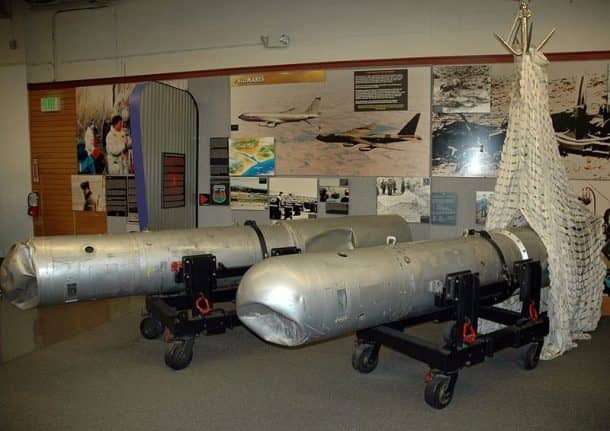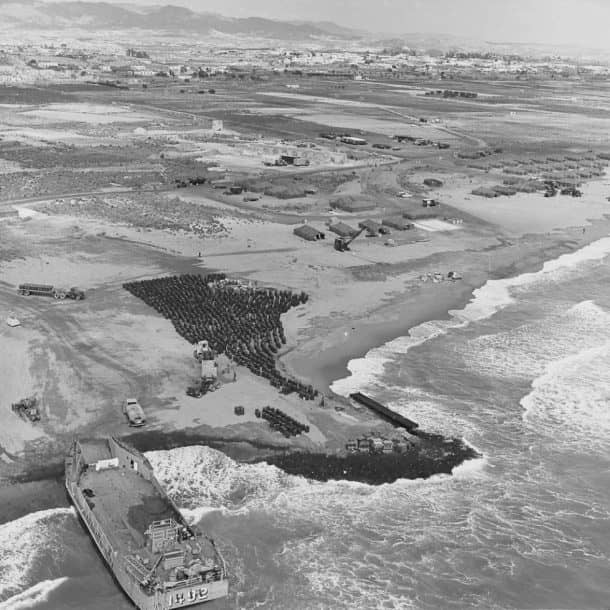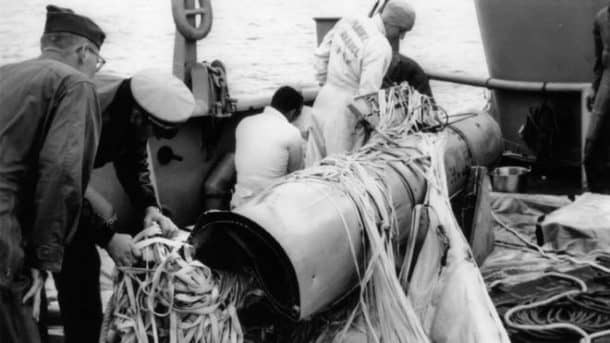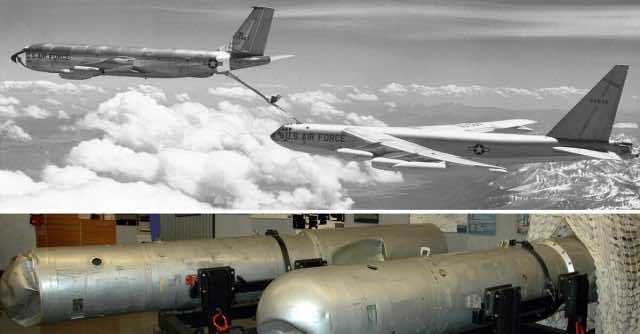As much as the world seems almost paranoid about the safety of nuclear technology, there have been almost 32 nuclear weapon accidents around the world since 1950! These accidents are known as “broken arrows”, those unexpected incidents where nukes are stolen, lost, detonated, fired, or launched.
The Palomares crash in Spain was one of these horrendous 32 incidents. On January 17, 1966, a United States B-52 bomber collided with a KC-135 tanker at 31,000 feet in a mid-air refueling accident, lighting up the fuel, and killing the four crew members, while destroying the tanker.
3 of the 7 crew-members in the B-52G were also killed. But most horrifically, the B-52G was also carrying four Mark 28 thermonuclear weapons, each having a yield of 70 kilotons (equal to 70 thousand tons of TNT).
To give you an idea of the possibility of a disaster that brewed, Little Boy, the bomb that destroyed Hiroshima, Japan in World War II, yielded approximately 15 kilotons! So, this accident had over 4 times the potential to cause devastation like the Hiroshima.

The nuclear weapons were being flown over Spain under Operation Chrome Dome, as a means to stack up the nuclear ammo near the Soviet airspace, so that the America could have first strike capability in case of a nuclear attack by the Soviets. During these testing times, there were at least a dozen B-52 bombers laden with hydrogen bombs hovering over Europe or the Atlantic.
After the B52 crash, three of the four nuclear weapons were quickly recovered on the ground near the small fishing village of Andalucia, known as Palomares. However, the non-nuclear explosives, which are embedded in the average nuclear bomb, detonated on two of the nuclear weapons and contaminated a two kilometre square area with plutonium. It was just a stroke of luck that the bombs didn’t explode!
Highly radioactive soil in the region was packed into 250L barrels and shipped to the U.S. for disposal. Thousands of barrels were filled by hand, aggregating to 1,700 tons in total. And even 50 years later, people still have concerns for the health of the workers who helped to pack those barrels.
The cleanup project wasn’t a complete success, and tests in the 1990s indicated that an additional 50,000 cubicle metres of soil was also contaminated, making Palomares the most radioactive town in Europe.

This was the fate of the three bombs landing in Palomares, while the fourth bomb drifted off after deploying its parachute and was carried by the wind into the Mediterranean Sea. The ones on the land were easy to find, but the search for water nuclear bomb proved to be a hassle.
The Americans soon began a mission to find the lost nuke before the Soviet Union submarines did, deploying more than 20 ships that included submarines and minesweepers. Despite all of this hyper search activity, the ships took a full 2 months, until March 17, to locate the bomb.

The ordeal wasn’t over though, as during the recovery of the bomb, the crew in DSV-Alvin dropped the thermonuclear weapon again after spending months to find it! So the search began once again, and the bomb was found for the second time, about a 100 meters deeper.
Not relying on humans this time, an unmanned torpedo recovery vehicle was sent down to retrieve the bomb. Finally, it ended this astounding story of a nuclear mess, while avoiding any major disaster.
A pretty disturbing history lesson, isn’t it?


